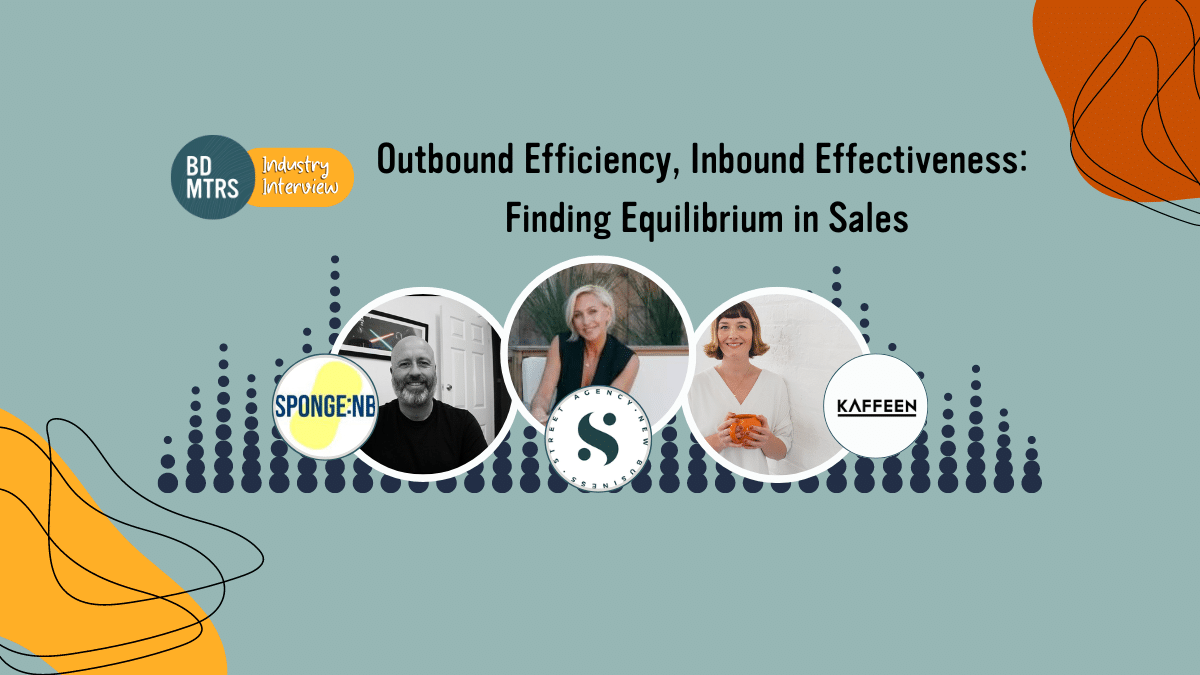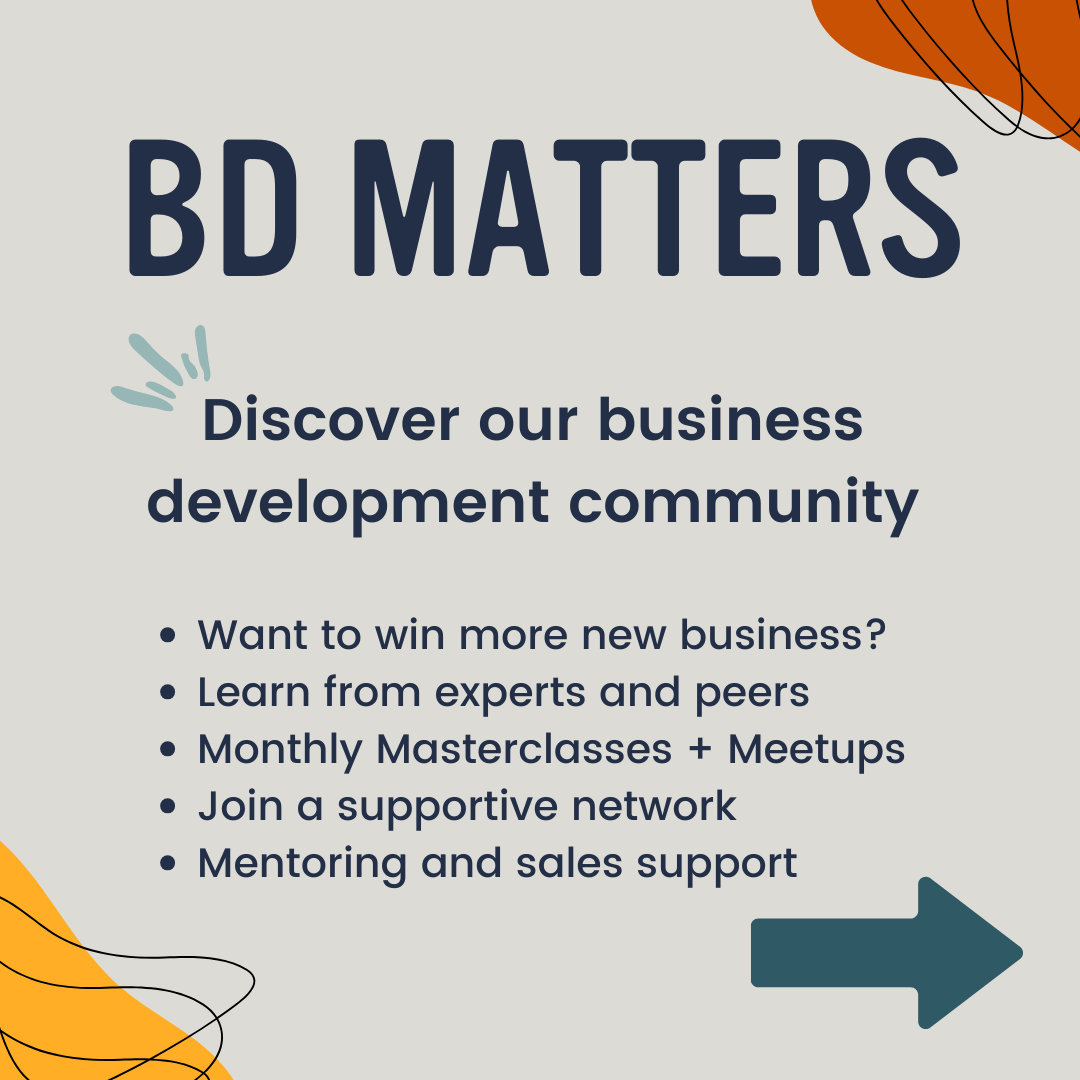
Finding the Balance: Outbound vs. Inbound Sales for Business Development Success
October 14, 2024
In a recent Industry Interview with Steve Fair from Sponge New Business, Katie Street from Street Agency, and Charlotte Ellis Maldari from Kafeen, we dove deep into a topic that every agency grapples with—finding the right balance between outbound and inbound sales.
It’s a challenge that can make or break your business development strategy, especially in today’s competitive landscape.
Here are our top takeaways from the talk, the best actionable advice.
Outbound Sales: Taking Control
Outbound sales is all about being proactive—reaching out to potential clients, starting conversations, and getting your foot in the door. It’s the more traditional side of sales: cold calls, emails, and direct outreach on platforms like LinkedIn. Outbound gives you control of your pipeline because you’re not waiting for the phone to ring—you’re actively pursuing the clients you want.
Steve Fair put it perfectly when he said, “Outbound is all about control.” With outbound sales, you’re not waiting for leads to come to you—you’re actively going out and starting the conversation. It’s cold calling, emailing, or connecting on LinkedIn, and while some people might think outbound is a thing of the past, the reality is that it’s evolving.
As Katie Street pointed out, outbound sales today are about personalisation and relevance. “You’ve got to know your audience inside and out,” she said. Gone are the days when you could send out mass emails or generic cold calls and expect results. Now, you’ve got to tailor your outreach, do your research, and provide value from the get-go.
Outbound can be time-consuming, but it’s also powerful because it gives you control over who you’re targeting and how you’re approaching them. If you need to fill your pipeline fast, outbound is where you start.
But it’s also about changing how you’re using Outbound. When used in isolation, it can be a bit of a blunt instrument, so our advice is use other channels to build awareness and credibility to warm leads up. If you’ve got marketing activities then you should be using Outbound to drive attention to them and it should definitely be used to nurture.
Inbound Sales: Building Trust Over Time
On the flip side, inbound sales relies on attracting potential clients through content—whether that’s blogs, webinars, social media, lead magnets or SEO. Inbound leads are typically warmer because they’ve already shown interest in your expertise or services before you’ve even spoken to them.
Charlotte Ellis Maldari made a great point about inbound sales: “Inbound is about trust and positioning yourself as the go-to expert.” Inbound takes a more passive approach, where your content—blogs, podcasts, webinars—draws in potential clients.
Inbound sales take longer to develop, but the leads are often warmer and more likely to convert. It’s about building a reputation and creating valuable content that resonates with your target audience.
Katie echoed this, saying, “Inbound is about playing the long game. It takes time to see results, but when you do, those leads are typically much further down the buyer’s journey.” And that’s the key with inbound—you’re nurturing relationships before the first conversation even happens.
It sounds simple, but this isn’t just about producing content because the world doesn’t need any more content for the sake of it! In order to stand out, your business needs to have a strong point of view on your target audience’s challenges. From this point you can ensure you will resonate in a more meaningful way. There’s also a lot to consider from a creative and production standpoint that can be the difference between getting cut through or not.
Achieving the Right Balance
So, how do you find that sweet spot between outbound and inbound? Here’s what we discussed:
- Start with outbound to gain momentum
Steve recommended starting with outbound if you’re looking to jump-start your pipeline. “It’s faster, and you have more control over it,” he said. But it’s important not to rely solely on outbound. As Katie highlighted, “You’ve got to personalise, or you’re just wasting your time.” But this allows you to target your ideal customer, make connections and build your database. - Build your inbound strategy alongside outbound
Charlotte emphasised the importance of building an inbound strategy in parallel. “While outbound gets you quick wins, inbound sets you up for the long-term,” she said. By consistently producing valuable content that speaks to your audience’s needs, you’re positioning your agency as an expert. And as your inbound strategy starts to gain traction, you’ll see those leads coming in more naturally. - Leverage automation for both
Katie brought up a great point about automation. “Automation can help bridge the gap between outbound and inbound,” she said. Use tools to automate your email sequences, lead nurturing, and follow-ups. This can save you time and help you stay on top of both your outbound and inbound efforts. - Be ready to adapt
Steve wrapped it up perfectly: “The balance between outbound and inbound will shift as you grow.” Early on, you might lean more heavily on outbound, but as your inbound efforts start to bear fruit, you’ll find that inbound takes on a larger role. The key is to remain flexible and adjust your strategy as needed.
Conclusion
Success in business development isn’t about choosing between outbound and inbound—it’s about knowing how to leverage both. Outbound gives you immediate control, while inbound builds a long-term foundation of trust. As Katie, Charlotte, and Steve all agreed, the trick is finding the right balance for your agency and not seeing them in isolation. Consistency is so important with both of these to ensure you don’t have peaks and troughs in your pipeline.
So, take a step back and think about where your efforts are right now. Are you too focused on one side? If so, it might be time to adjust and find that perfect equilibrium to drive sustainable growth. Think about how they can better complement each other and get in touch if you want to bring in the big guns!
Watch the interview replay here

